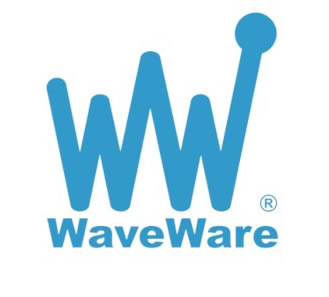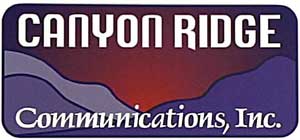Selected portions of the BloostonLaw Telecom Update, and/or the BloostonLaw Private Users Update — newsletters from the Law Offices of Blooston, Mordkofsky, Dickens, Duffy & Prendergast, LLP are reproduced in this section with the firm’s permission.
| BloostonLaw Telecom Update | Vol. 18, No. 13 | March 25, 2015 |
Last Call: Form 499-A; Accessibility Certifications Due April 1 Wednesday, April 1 marks the filing deadline for two widely-applicable reports: the FCC Form 499-A revenue reporting form and the Accessibility Recordkeeping Certification. Carriers that are exempt from filing the 499-Q reports because their USF contribution is deemed “de minimis” must still file the 499-A. Clients interested in obtaining assistance with either filing should feel free to contact the firm for more information. Headlines
Everything You Always Wanted to Know About the FCC's Open Internet Order (But Were Afraid to Ask) As previously reported, the FCC adopted new Open Internet rules governing retail broadband Internet access services at its February 26 open meeting (BloostonLaw Telecom Update, March 4, 2015). The FCC’s 400-page order was released on March 12, 2015. The Open Internet (a/k/a Net Neutrality) rules include: (a) “bright line” prohibitions against blocking, throttling ( i.e., degradation of content), and paid prioritization, subject (in the case of blocking and throttling) to exceptions for reasonable network management; (b) a catch-all, backstop prohibition against unreasonable interference with or disadvantaging of end user or edge provider use of lawful content, applications, services or devices, likewise subject to an exception for reasonable network management; and (c) enhanced transparency requirements regarding the public disclosure of network management practices, performance characteristics (including actual speeds and latency, packet loss, and specialized services), and commercial terms (including regular and promotional pricing, other fees and surcharges, and data caps and allowances). The Open Internet rules apply to both fixed (wired and wireless ) and mobile (terrestrial and satellite) retail broadband Internet access services, as well as to future services that the FCC finds to be their “functional equivalent.” They do not apply to enterprise service offerings, special access services, virtual private network services, hosting or data storage services, Internet backbone services, or dial-up Internet access services. This is the FCC’s third attempt at Open Internet rules. Its first attempt (based upon Title I ancillary authority) and second attempt (based upon Section 706 authority) were overturned, in whole or major part, by the courts. The current effort is premised upon both Section 706 and its reversal of past policy to classify retail broadband Internet access services as telecommunications services subject to common carrier regulation pursuant to Title II of the Communications Act. In addition, for mobile retail broadband Internet access services, the FCC also claims regulatory authority under the Title III wireless regulatory provisions of the Act. A major reason for the 400-page length of the order was the FCC’s attempt to avoid striking out for a third time during the virtually certain judicial appeals. Indeed, two Petitions for Review were filed the same day the Order was released to the public — USTelecom filed a “Protective” Petition for Review with the United States Court of Appeals for the District of Columbia, and Alamo Broadband filed in the United States Court of Appeals for the Fifth Circuit. The FCC spent many pages detailing the economic, legal and policy bases for its ruling — particularly its determinations: (a) to re-classify retail broadband access services as telecommunications services rather than information services; and (b) to subject mobile services to the same rules as fixed services rather than the former lesser standards. In addition to the possibility that some or all of the new Open Internet rules may be vacated or remanded on appeal, there is also a possibility that Congress will pass amendments to the Communications Act or restrictions to the FCC budget that would negate or modify portions of the FCC order. At this time, it is not clear whether any such legislation can be passed, and whether it would survive a likely Presidential veto. The change to Title II telecommunications service regulation has been the most controversial aspect of the Open Internet order. The FCC has attempted to generate support and reduce opposition by using the forbearance process adopted in the Telecommunications Act of 1996 to fashion what it calls “light touch” Title II regulation. “Forbearance” is a unique statutory process that enables the FCC to announce, under certain conditions, that it will not enforce specified provisions of the Communications Act or the FCC’s own rules against some or all classes of telecommunications carriers. The statutes and regulations remain on the books where they can be enforced against telecommunications carriers not included within the scope of the forbearance, and where they can be revived by a future FCC order without the need for new legislation or rulemakings. In the Open Internet order, the FCC has clearly and explicitly refused to forbear from what it characterizes as the three basic consumer protection provisions of Title II. These are: (1) Section 201 (which prohibits unjust and unreasonable prices and practices); (2) Section 202 (which prohibits unreasonable discrimination and undue preferences); and (3) Section 208 (which governs customer complaints). The FCC has also declined to forbear: (a) from related enforcement provisions of Sections 206, 207, 209, 216 and 217 of the Act; (b) from Section 222 (which governs Consumer Proprietary Network Information (CPNI) and related customer privacy protections); (c) from Section 224 (which governs access to poles, ducts, conduits and rights-of-way); (d) from Sections 225, 255 and 251(a)(2) (which deals with access by persons with disability), except that requirements for Telecommunications Relay Service contributions by newly Title II-regulated retail broadband Internet access service providers are forborne until the FCC completes a rulemaking regarding such contributions; (e) from Sections 254 and 214(e) (which deal with universal service), except that requirements for Universal Service Fund contributions by newly Title II-regulated retail broadband Internet access service providers are forborne until the FCC completes a rulemaking regarding such contributions and except that subsections 254(g) (regarding rate averaging by inter-exchange carriers) and 254(k) (regarding cross-subsidization of competitive services) are forborne; (f) from Section 229 (regarding Communications Assistance to Law Enforcement Act (CALEA) rulemakings and oversight; and (g) from 223 and 231 (regarding obscene and illicit content). Title II provisions that have been forborne with respect to newly Title II-regulated retail broadband Internet access service providers include: (1) Sections 203 and 204 (regarding tariffs); (2) Sections 205 and 212 (regarding rate prescription and interlocking directorates); (3) Sections 211, 213, 215, 218, 219 and 220 (regarding various information collection and reporting obligations); (4) Section 214 service discontinuation and transfer/assignment application requirements; (5) Sections 251, 252 and 256 (regarding interconnection); (6) Section 258 (regarding unauthorized carrier changes); and (7) the FCC’s truth-in-billing rules. For affected mobile retail broadband Internet access service providers, the FCC has retained its existing data roaming rule (codified in Section 20.12(e) of the Rules) and forborne from the CMRS roaming rule (codified in Section 20.12(d)), pending completion of a future rulemaking to revisit the data roaming obligations of newly re-classified mobile providers. The FCC also indicated that it anticipates addressing the applicability of mobile wireless hearing aid compatibility (HAC) requirements to mobile broadband Internet access service devices during the foreseeable future. The impact of the new Open Internet rules upon most rural local exchange carriers (RLECs) and their Internet service provider (ISP) affiliates does not appear to be substantial at this time. Most RLECs had previously elected Title II regulation for their broadband transmission services. Whereas Netflix and other edge providers have imposed substantial bandwidth and congestion costs upon RLECs, few RLECs have had a large enough customer base to provide the negotiating leverage necessary to obtain paid prioritization or other concessions from such edge providers. Whereas the Open Internet rules appear to restrict the ability of RLECs and ISPs to develop new revenue streams from edge providers and to restrict their finances to customer rates and universal service support, this does not appear to represent a major change. RLECs should note that the FCC indicates repeatedly in the order that their prior election of Title II regulation for their broadband transmission services precludes them from participation in the benefits of the FCC’s forbearance from most or all of the above-specified Title II provisions. It is not yet clear how this will affect ISP affiliates of RLECs. Unless and until the FCC rules otherwise, the best interpretation is that the applicability of forborne rules upon RLECs and their ISP affiliates remains the same. For example, with respect to the currently forborne Section 254(d) requirement for universal service contributions by newly Title II-regulated broadband Internet access service providers, the best and most reasonable interpretation is that RLECs must continue making universal service contributions on their interstate broadband transmission service revenues but that their ISP affiliates do not have to make universal service contributions on their customer revenues unless and until the FCC modifies its rules to expand the universal service contribution base to include broadband Internet access revenues. Small fixed and mobile providers may be adversely impacted by the FCC’s enhanced transparency requirements. Whereas the FCC’s current transparency requirements can be satisfied in most part by website disclosures, its enhanced transparency requirements appear to require substantial ongoing monitoring and updating, particularly with respect to speeds, latency, packet loss and other performance characteristics. These ongoing responsibilities can severely strain the staffing and financial resources of small companies, while providing little or no tangible benefit to customers or edge providers. Whereas the FCC temporarily exempted entities with 100,000 or fewer broadband subscribers from the additional enhanced requirements, it will soon initiate a rulemaking to determine whether such exemption (or an alternative one) will be made “permanent.” The FCC did not take the opportunity to address the interconnection rights and costs of small broadband Internet access service providers. By forbearing from Sections 251, 252 and 256 of the Act and by excluding special access and Internet backbone services from the scope of its Open Internet rules, the FCC has left many small fixed and mobile providers largely to the mercy of obtaining interconnection and transit from the types of large entities that increasing show little or no interest in negotiating with them. Whereas the current access and intercarrier compensation regime has allowed rural and other smaller carriers to provide reasonably comparable services to their customers, there are indications that the evolving Internet Protocol (IP) world will require smaller carriers to bear the substantial costs of bringing their traffic to and from a very limited number of locations, which may be hundreds or thousands of miles distant. Unless addressed by appropriate legislation or regulation, increased interconnection distances and costs could result in a much more expensive and less “open” Internet for the customers of rural and other small carriers. Finally, the relative equivalence of Open Internet regulation for both fixed and mobile broadband Internet access service providers has potential future implications for both groups. The FCC does indicate that fixed and mobile services are “separate” services in the event that the courts remand or vacate parts of the order, and also indicates that reasonable network management practices may need to be more flexible for mobile providers. However, the FCC devotes major portions of the order to describing the growth and advances of mobile broadband services (including the increasingly ubiquitous use of smart phones and tablets), and to justifying its change from the use of less stringent Open Internet rules for mobile broadband providers to the application of the same rules to both fixed and mobile providers. Whereas the FCC has heretofore (we believe correctly) treated fixed and mobile services as separate and complementary, the order takes substantial steps toward treating them as equivalent and competitive substitutes. If continued, this can have significant impacts upon local exchange carrier status, regulatory obligations, universal service mechanisms and unsubsidized competitor classifications. President Obama Establishes Broadband Opportunity Council On March 23, President Obama signed a Presidential Memorandum that defines the policy of the Federal Government regarding regulatory barriers to broadband deployment and establishes the Broadband Opportunity Council, an entity charged with carrying out the Federal policy. According to the Memorandum, the policy of the Federal Government is: To use all available and appropriate authorities to: identify and address regulatory barriers that may unduly impede either wired broadband deployment or the infrastructure to augment wireless broadband deployment; encourage further public and private investment in broadband networks and services; promote the adoption and meaningful use of broadband technology; and otherwise encourage or support broadband deployment, competition, and adoption in ways that promote the public interest.
In adhering to this policy, the Memorandum directed Federal agencies to pay particular attention to “opportunities to promote broadband adoption and competition through incentives to new entrants in the market for broadband services; modernizing regulations; accurately measuring real-time broadband availability and speeds; and other possible measures, including supporting State, local, and tribal governments interested in encouraging or investing in high-speed broadband networks” and also “increasing broadband access for under-served communities, including in rural areas, and to exploring opportunities to reduce costs for potential low-income users.” The Council, charged with carrying out this policy, will be comprised of representatives from 25 different government agencies and will be co-chaired by Secretary Tom Vilsack and Commerce Secretary Penny Pritzker. According to the Memorandum, the Council must “consult with State, local, tribal, and territorial governments, as well as telecommunications companies, utilities, trade associations, philanthropic entities, policy experts, and other interested parties to identify and assess regulatory barriers and opportunities.” However, spectrum allocation is expressly outside the work of the Council.
The Memorandum also sets a fairly brisk initial itinerary for the Council: - By April 7, all participating agencies must have designated their representatives to the Council;
- By May 22, participating agencies must submit “a comprehensive survey of Federal programs, including the allocated funding amounts, that currently support or could reasonably be modified to support broadband deployment and adoption, as well as a survey of all agency-specific policies and rules with the direct or indirect effect of facilitating or regulating investment in or deployment of wired and wireless broadband networks.”
- By July 21, participating agencies must submit to the Council an initial list of actions that each of their agencies could take to identify and address regulatory barriers, incentivize investment, promote best practices, align funding decisions, and otherwise support wired broadband deployment and adoption.
- By August 20, the Council must submit to the President “a coordinated and agreed prioritized list of recommendations on actions that agencies can take to support broadband deployment and adoption.”
Law & Regulation
House Bill Introduced to Promote FCC Collaboration On March 18, Reps. Anna G. Eshoo (D-Calif.),. John Shimkus (R-Ill.) and Mike Doyle (D-Pa.) announced the re-introduction of the “FCC Collaboration Act of 2015,” a bill intended to allow the FCC to hold nonpublic “collaborative discussions.” Specifically, under the proposed legislation, a bipartisan majority of Commissioners would be permitted to hold a nonpublic meeting to discuss official business if (a) no agency action is taken at such meeting; (b) each person present is either a Commissioner, employee thereof, a member of a joint board or conference, or the staff thereof; and (c) an attorney from the FCC’s Office of General Counsel is present. The Commission must publish disclosure of such meeting within 2 business days, similar to existing FCC ex parte notification rules. “The FCC has huge issues to tackle, representing some of the nation’s most pressing communications challenges, yet the current ‘Sunshine’ Rule restricts commissioners from collaborating freely and effectively,” said Eshoo. “Simple collaboration, discussion of issues, and shared expertise outside an official setting are essential in order for the Commission to keep up with the rapidly changing telecommunications landscape.” Senators Amy Klobuchar (D-Minn.) and Dean Heller (R-Nev.) introduced companion legislation in the Senate. Rep. Walden Introduces Draft Legislation to Reauthorize the FCC Ahead of Hearing On March 17, Rep. Greg Walden (R-Ore.) released a draft bill aimed at reauthorizing the FCC (for the first time in 25 years). According to the official announcement of the draft bill, it would: - Authorize Federal Communications Commission appropriations at the current level for the next four fiscal years.
- Authorize appropriations to the commission for spectrum auction expenses at the current level through 2022 - the last year of existing FCC auction authority.
- Authorize $9 billion per year in appropriations — to be offset by fund contributions — for the support of Universal Service programs. This would cap the Federal Universal Service Fund at $9 billion per year, limiting the growth in the fund, and thus the amount of money the FCC extracts from consumers each year.
- Authorize the commission to make changes to its schedule of fees to reflect changes in the composition of the commission’s work and the rate of inflation.
- Create an independent Inspector General at the FCC, removing the ability of the Chairman to hire or fire the Inspector General.
The draft bill was released ahead of a hearing on FCC oversight, which was prompted by concerns over the statutory basis of several recent FCC actions, the most major of which is the Open Internet Order discussed above, in which the FCC reclassified broadband Internet access as a Title II telecommunications service. Other concerns included a CPNI enforcement action, the preemption of Tennessee and North Carolina municipal broadband laws, and the mounting pile of unfinished dockets on the Commission’s backlog. FCC Grants AT&T Claims in Interstate Access Complaint On March 18, the FCC issued a Memorandum Opinion and Order granting in part a complaint filed by AT&T against Great Lakes Comnet (GLC) and Westphalia Telephone (WTC), finding that GLC billed AT&T for interstate access services under an unlawful tariff and that WTC unlawfully billed for services that GLC actually provided. Specifically, the FCC found that GLC was a CLEC for the purposes of Section 61.26 of the FCC’s Rules, which states that “if a CLEC provides some portion of the switched exchange access services used to send traffic to or from an end user not served by that CLEC, the rate for the access services provided may not exceed the rate charged by the competing ILEC for the same access services.” Since GLC’s tariffed rates were in excess of the rate charged by the competing ILEC, the FCC found that GLC violated Section 61.26 and that its tariff was therefore unlawful. AT&T is entitled to pursue an award of damages to be determined in the next phase of this proceeding. FCC Allows Certain Customer Notice Calls under TCPA The FCC has granted a request by the Cargo Airlines Association to exempt its proposed free-to-end-user package delivery notifications to consumers’ wireless phones from the Telephone Consumer Protection Act (“TCPA”) constraints on autodialed and prerecorded calls and messages to wireless telephone numbers, as long as consumers are not charged and may easily opt out of future messages. The Telephone Consumer Protection Act (“TCPA”) was enacted by Congress in 1991 with the objective of protecting consumers from unwanted telephone marketing calls and faxes, which are often considered by consumers to be intrusive and an invasion of their privacy. The law also restricts making calls or sending text messages using automatic telephone dialing systems and prerecorded voice messages (also referred to as “robocalls”) to cell phones and other mobile service devices. The Commission’s action will allow wireless consumers to receive package delivery notifications via their wireless phones with the following stipulations: - A notification must be sent, if at all, only to the telephone number for the package recipient;
- Notifications must identify the name of the delivery company and include the contact information for the delivery company;
- Notifications must not include any telemarketing, solicitation or advertising content;
- Voice call and text message notifications must be concise, generally one minute or less in duration for voice calls and one message of 160 characters in length for text messages;
- Delivery companies shall send only one notification (whether voice call or text message) per package, except that one additional notification may be sent to a consumer for each of the following two attempts to obtain the recipient’s signature when the signatory is not available to sign for the package on the previous delivery attempt;
- Delivery companies relying on this exemption must offer parties the ability to opt out of receiving future delivery notification calls and messages and must honor the opt-out requests within a reasonable time from the date such request is made, not to exceed thirty days; and
- Each notification must include information on how to opt out of future delivery notifications; voice call notifications that could be answered by a live person must include an automated, interactive voice-and/or key press-activated opt-out mechanism that enables the called person to make an opt-out request prior to terminating the call; voice call notifications that could be answered by an answering machine or voice mail service must include a toll-free number that the consumer can call to opt out of future package delivery notifications; text notifications must include the ability for the recipient to opt out by replying “STOP.”
The Commission’s grant of the exemption is limited to package delivery notifications to consumers’ wireless phones either by voice or text and applies so long as those calls are not charged to the consumer recipient, including not being counted against the consumers’ plan limits on minutes or texts. Our clients that engage in similar delivery notifications should be mindful of the conditions listed above and that any party who sends an autodialed or prerecorded package delivery notice to a wireless number must be in full accordance with these requirements in order to take advantage of the exemption from the TCPA restrictions. Industry
Report Details Increasing Broadband Speeds The Washington Post is reporting that, according to a recent “State of the Internet” report produced by Akamai Technologies, a cloud services provider and content delivery network operator headquartered in Cambridge, Massachusetts, demonstrated that broadband speeds across the nation are growing. All but seven states saw average peak connection speeds grow between the third and fourth quarters of 2014. Delaware ranked first in the United States with average peak speeds of 75.4 megabits per second, Virginia ranked second place at 73.5 Mbps (up four spots from last year), and D.C. was third at 65.9 Mbps, followed by Massachusetts and Rhode Island. Kentucky was the state with the slowest average peak speeds (34 Mbps). Kentucky has partnered with a private company to build a $250 million to $350 million in fiber backbone throughout the state, which will hopefully improve its rank. Only Hong Kong (87.7) and Singapore (84) outstripped America’s top speed, though only Kuwait (33.9) was slower than America’s slowest. 
Calendar At A Glance
March
Mar. 30 – Comments are due on Letter of Credit Requirements.
Mar. 31 – FCC Form 525 (Delayed Phasedown CETC Line Counts) is due.
Mar. 31 – FCC Form 508 (ICLS Projected Annual Common Line Requirement) is due.
Mar. 31 – International Circuit Capacity Report is due. April
Apr. 1 – FCC Form 499-A (Annual Telecommunications Reporting Worksheet) is due.
Apr. 1 – Annual Accessibility Certification is due.
Apr. 7 – Reply comments are due on 911 Outage NPRM.
Apr. 13 – Reply comments are due on Letter of Credit Requirements.
Apr. 14 – Deadline for reply comments on Online Public File Expansion NPRM.
Apr. 21 – Reply Comments are due on 911 Policy NPRM. May
May 1 – FCC Form 499-Q (Quarterly Telecommunications Reporting Worksheet) is due.
May 31 – FCC Form 395 (Annual Employment Report) is due. |



































 David George and Bill Noyes
David George and Bill Noyes



































